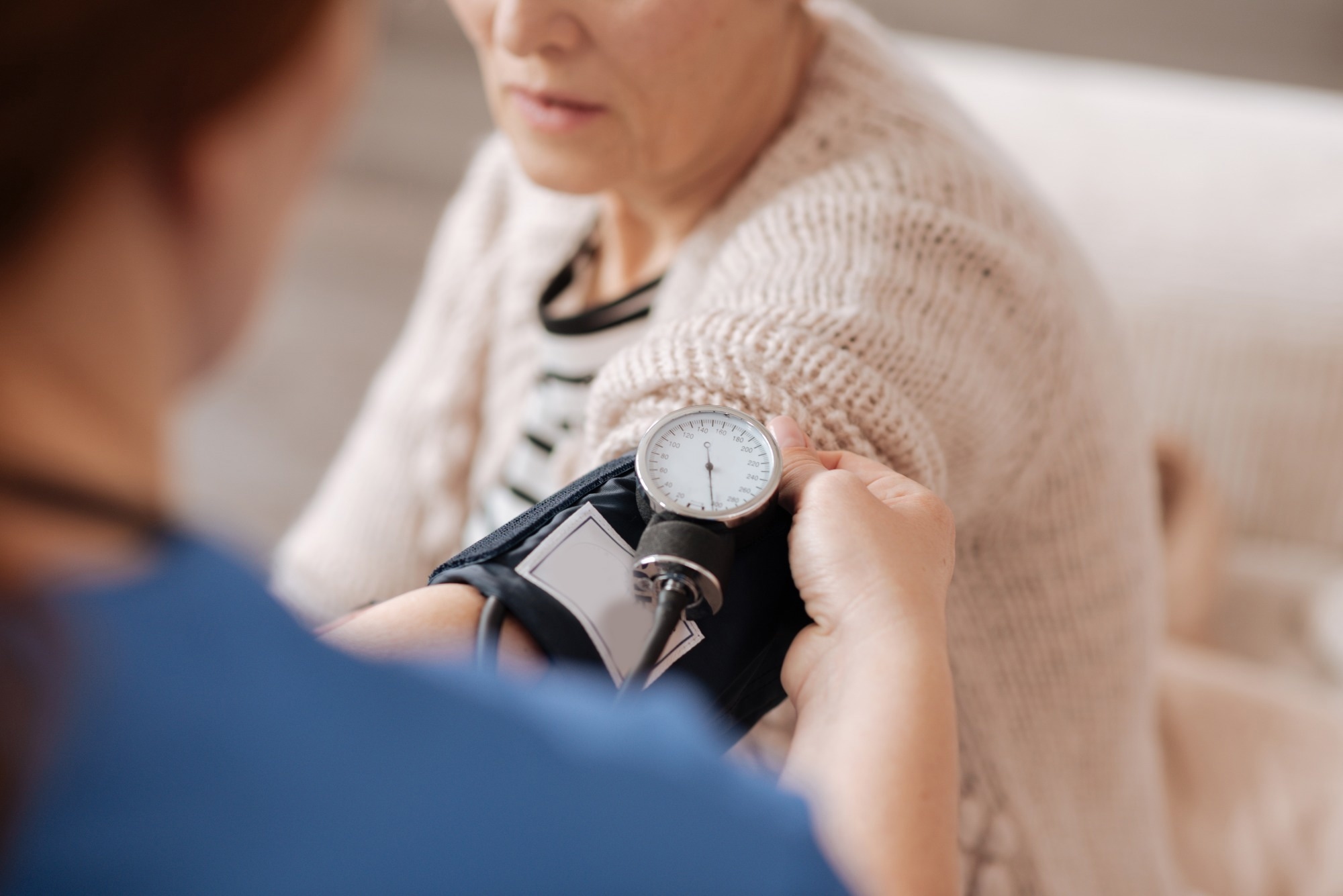Blood
Study highlights the importance of using the American Heart Association-recommended technique for blood pressure measurement
In a prospective, randomized cohort study published in eClinicalMedicine, researchers applied a modified cross-over design to compare methods of taking blood pressure (BP) readings.
They compared American Heart Association (AHA) guidelines to those followed in routine clinical care in a primary care outpatient office setting in Columbus, United States of America (USA).
Background
The AHA has extensively described the proper protocol to obtain accurate BP readings, which pertains to selecting the appropriate size cuff, positioning the patient with feet flat on the floor, supporting the back and arm, and having the patient seated for at least three to five minutes before taking the first BP reading with cuff positioned at heart level.
Furthermore, the AHA guidelines recommend therapeutic intervention at lower systolic and diastolic BP (SBP/DBP) thresholds (130/80 mmHg) than previously established clinical standards (140/90 mmHg).
In routine point of care, a medical assistant, e.g., a nurse performing BP measurements, may ignore the current AHA guidelines frequently and use improper methods, leading to hypertension (HTN) misdiagnosis. For instance, practitioners may not follow recommendations related to the proper positioning of the BP manometer and the position of the feet, back, and arm.
HTN, a leading cause of heart disease worldwide, also increases the risk of renal diseases, vascular dementia, and peripheral artery disease. People on drugs for HTN management might require additional drugs or higher doses, which increases the risk of adverse reactions. BP values guiding therapeutic management must be accurate.
Furthermore, the cumulative effect of poor positioning on BP assessment during routine care needs to be discovered.
About the study
In the present study, researchers recruited 150 participants aged ≥18 with an arm circumference between ≥18 and ≤42 cm who did not have a previous diagnosis of atrial fibrillation and renal dialysis shunt. They were randomly randomized into three study groups, as follows:
- Group A, wherein they first took BP readings on a fixed-height examination table and then on an exam chair with adjustable positioning;
- Group B, wherein they took readings in the reverse order, on a chair and then on the table;
- Group C, wherein they took both sets of readings in the exam chair for an independent estimate of the order effect.
This enabled researchers to compare BP readings obtained while strictly adhering to published AHA guidelines with BP readings taken using methods currently practiced in many clinical settings. The primary outcome was the difference between the mean BP readings taken on the table and the chair.
Other AHA recommendations included a five-minute rest period between patient positioning, the first BP reading initiation, and keeping quiet during the BP acquisition process.
Results
There were 48, 49, and 53 participants in Groups A, B, and C, respectively. The mean BP readings taken on the examination table were markedly higher (7.0/4.5 mmHg) than those taken in the position-adjustable chair, with the difference being statistically significant for both SBP and DBP regardless of the order of modality assessed.
This finding is consistent with the findings by Kallioinen et al. regarding the effects of not having feet on the floor, back supported, and BP cuff at heart level, i.e., not adhering to individual AHA recommendations.
Furthermore, the upward bias due to taking BP readings on an examination table was ~50% more than that assessed by Sakhuja et al., demonstrating that adhering to AHA-guided protocol could decrease HTN misdiagnosis in millions of patients, preventing unnecessary pharmacologic treatment or more intense clinical follow-up.
It has financial implications, too, because healthcare costs for adults with HTN versus the nonhypertensive population in the USA are higher by $131 billion per year.
Conclusions
The current study results suggest that adhering to the AHA protocol for obtaining BP readings is important, and can improve accurate diagnosis, treatment, and management of many conditions, especially HTN.
Importantly, this is an easily implemented solution that could save unnecessary treatment or overtreatment of millions of patients.

